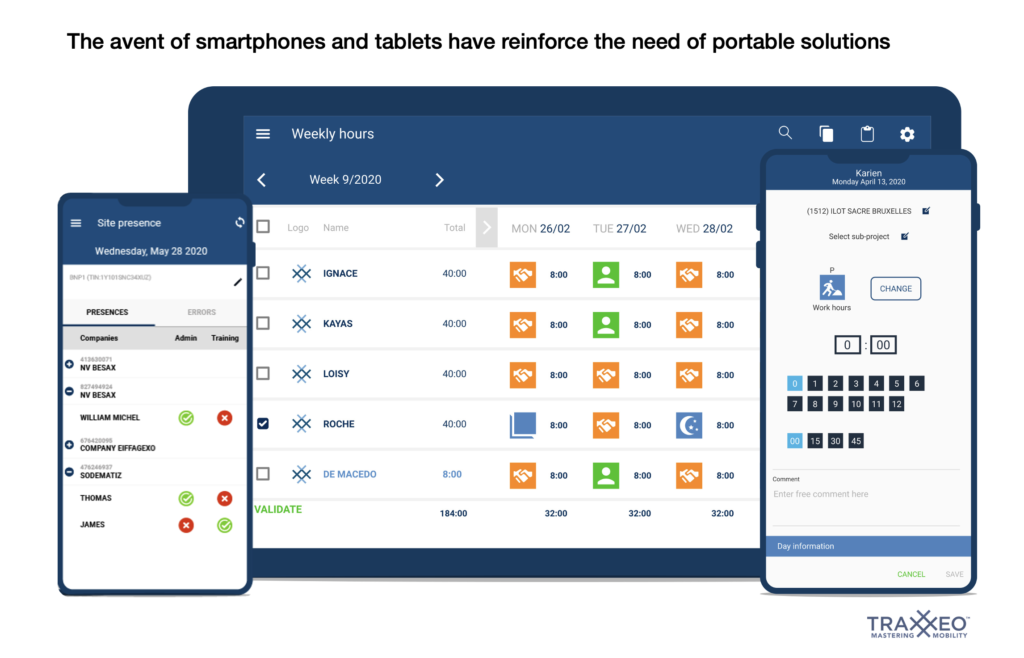
Investments in construction software industry have more than doubled in the past decade, shows management consultancy McKinsey. Meanwhile, construction companies are increasingly turning to integrated software platforms, better performing than isolated solutions. This has to do with 4 main shifts that are re-shaping construction software market.
For long, construction industry was characterized by a low level of digitalization. Then, the first solutions were made to resolve very specific problems, for specific stakeholders: better costs analysis for financial department, better field information for payroll managers, etc. Far from this fragmented and siloed way of working, integrated software platforms are emerging, enabling construction companies to take advantage of the many shifts that are experiencing construction software industry.
The 4 shifts in construction software industry
Here are summarized the 4 shifts, highlighted by Paul Wilkinson on AEC TechTV.
1. The rise of cloud and SaaS applications
Over the past 20 years, there have been a significant rise in the use of cloud and SaaS (software as a service) applications. This enables intelligent document management, within and outside a construction company, for example.
Additionally, SaaS companies’ clients benefit from powerful solutions without the hosting’s associated risks or the costs of software development and installation. This makes those solutions cheaper and easier to roll out.
2. The strong demand for portable solutions
Smartphone and tablets solutions are rising, as the need for portable solutions is booming. Construction companies have expressed their needs for practical and mobile solutions to capture, access, share, edit or report on a wide range of information processes.

This also answered the need of better information sharing between field and office. Companies are increasingly investing into time and attendance mobile applications. Investments in presence control applications are also rising, as the attendance registration of workers on site is becoming a legal obligation in more and more countries.
3. The BIM model and related technologies
The increasing development and adoption of BIM (Business Information Modeling) and related technologies is starting to address the fragmented approach of information management in construction companies.
Information sharing is more and more crucial, as it enables better collaborations between departments. As BIM is more and more adopted in construction companies, it is interesting to see that other digital solutions provide additional information to enrich the BIM model. This enables to centralize all the existing data on a comprehensive way. For example, it is now possible to declare hours executed on an object of the BIM model.
4. Covid-19 pandemic learnings
Evidently, the covid-19 pandemic can’t be ignored. The sanitary crisis has proven the potential for IT to enable better communication processes across construction businesses.
It also highlighted the interest into solutions that help organization to rapidly address risks or opportunities. The pandemic has been differently experienced by construction companies, showing that reactivity is the key to successfully address challenging situations. And fast and strong decisions must be based on up-to-date and accurate information.
As a consequence, the best-suited digital solutions for collecting information on the field have known a rise of interest.
Towards digital ecosystems
As previously stated, investments in construction software industry have more than doubled in the past decade. The historically low level of digitalization in the construction industry now leaves room for strong investments into powerful digital solutions. The emphasis is now on the need of integrations between those solutions, creating a performant and highly connected digital ecosystem.
To answer this need, software editor company Traxxeo has developed a platform to manage all material and human resources of any construction company. This comes with a wide range of web and mobile applications, connecting field and office. Integrations with clients’ existing software enable those solutions to fully take part into their digital ecosystem.